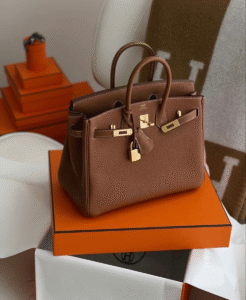
Apple Inc. is a global technology icon renowned for its innovation and design excellence. One of the most famous technology brands known worldwide, this multinational company was founded by Steve Jobs, Steve Wozniak and Ronald Wayne on 1st April 1976 with its headquarters located at Cupertino, California, USA. The company holds the distinction of being the world’s largest technological corporation in terms of revenue, generating massive $394.3 billion in revenue for the year 2022. Additionally, in March 2023 Apple, secured its place as the world’s most valuable company based on market capitalization. Also in June 2022, Apple stands as the fourth-largest vendor in the personal computer market when considering unit sales, and the second-largest mobile phone manufacturer globally. Also, it is counted amongst the top 5 technological companies in America.
How it all did begin?
Apple’s history is a tale of innovation, leadership changes, and iconic products. It all began in 1976 when Steve Jobs and Steve Wozniak introduced the Apple I computer. This success was followed by the Apple II in 1977, which firmly established Apple in the personal computer market. However, subsequent products like the Apple III and Lisa faced difficulties. Internal conflicts in 1984 led to Steve Jobs leaving the company. Apple faced tough competition from IBM and Microsoft, particularly with the rise of Windows.
During Jobs’ absence, Apple struggled under CEO John Sculley, while Jobs founded NeXT Inc. In 1997, Apple acquired NeXT, and Jobs returned, implementing user-friendly designs and innovation. The iMac in 1998 was a game-changer, marked by its unique design. Under Jobs, Apple launched ground-breaking products like the iPod, iPhone, MacBook, and iPad, building a loyal customer base. After Jobs’ passing in 2011, Tim Cook took the helm as CEO and has continued Apple’s legacy of innovation and success.
Apple’s technological evolution

Apple’s evolution into a luxury brand stems from its ground breaking products that redefine consumer expectations. The iPod, introduced in 2001, epitomized luxury and exclusivity by offering a thousand songs in a pocket-sized device, becoming a symbol of cutting-edge technology. The iTunes ecosystem disrupted the music industry, showcasing Apple’s ability to merge luxury with digital convenience. In 2007, the iPhone’s launch marked a new pinnacle. Its elegance, functionality, and integration of touchscreens, apps, and internet connectivity turned it into a symbol of social and economic status. The App Store’s introduction further empowered the iPhone, creating a digital economy and cementing its status as a must-have accessory. The iPad, bridging laptops and smartphones in 2010, added a new dimension of luxury, appealing to professionals and trendsetters. Apple’s MacBook line, focusing on design excellence and industry-leading features, solidified its reputation as a provider of high-end technology. The Apple Watch, launched in 2014, became a game-changer. Apple hired renowned luxury watch designers, offered categories like sports and luxury, and emphasized fitness and health features. Heavily advertised with celebrity endorsements, it strengthened Apple’s position as a status symbol, not just in technology but in lifestyle. Through strategic innovation and marketing, Apple seamlessly blended luxury, technology, and sophistication, creating products that reflect individual taste and social standing.
APPLE – a Status Symbol for many

However, Apple’s achievement goes beyond mere financial gains or high product sales. More than just being a luxury brand, Apple has turned out to be a status symbol for many with majority amount of people buying apple products not for its technology but the status and brand weight that it holds. Few brands have revolutionized their respective industries to the extent that Apple has, challenging the conventional norms.
Despite of its amazing technological achievements, their prosperity can be attributed directly to their marketing tactics. Apple’s marketing approach cultivates passionate supporters who are willing to queue for hours on end to be among the first to obtain the latest product as soon as it is launched, generating a buzz on social media.
Apple does what it does so well that there are whole websites out there devoted to nothing but Apple products and Apple marketing. Apple goes way beyond the “computer brand” label -they create products for their target market, loyal customers that believe make these products life better, easier, more fun, and cooler.
How on earth do they do it?

- Innovative design
Apple’s dedication to innovative design shines through in its diverse product range. Take the iPhone, with its sleek profile and premium materials, or the MacBook line-up, blending power with elegance. iPads boast slim bezels and versatility, appealing to professionals and creatives alike. The Apple Watch seamlessly merges fashion and technology, offering customizable bands and health features. Air Pods redefine wireless ear buds, combining functionality with a chic appearance. Across these devices, Apple not only delivers cutting-edge technology but also elevates user experience. Owning an Apple product signifies an appreciation for superior design, making a statement about personal style and sophistication in a compact, stylish package.
- Usage of high-quality premium materials
Apple’s commitment to premium quality is evident in its meticulous choice of materials, such as lightweight and robust aluminium for products like MacBook and iPhone, luxurious stainless steel in the Apple Watch, high-end ceramic in the Apple Watch Edition, and specialized glass like the Ceramic Shield for iPhone displays, enhancing durability and performance. This selection reflects sophistication, innovation, and environmental responsibility, reinforced by Apple’s dedication to using recycled materials. Their latest introduction of Titanium for the iPhone Pro underscores their pursuit of lightweight durability, as Titanium boasts one of the best strength-to-weight ratios among metals. Apple’s focus on materials results in enduring symbols of quality and sustainability.
- Brand loyalty and community

Apple’s strategic creation of a vibrant community has transformed the brand into more than a product provider it’s become a lifestyle. Events like Apple Keynotes and product launches captivate audiences worldwide, generating excitement and anticipation. Online forums and social media groups provide platforms where users share experiences, tips, and creativity. This collective engagement fosters a profound sense of belonging, creating emotional connections between users, the brand, and fellow enthusiasts. The shared passion and mutual support within this community install a deep loyalty. Apple users aren’t merely consumers; they are part of an inclusive, passionate network that amplifies their attachment to the brand, elevating their ownership experience to something beyond technology, a genuine sense of belonging.
- Celebrity endorsements and influencer culture
The influence of celebrities and influencers plays a significant role in shaping consumer perceptions, and Apple has masterfully utilized this phenomenon to enhance its brand image. When high-profile individuals showcase their Apple devices on social media or during public events, it creates a sense of aspiration and desirability among their followers. People often look up to these figures as trendsetters, imitating their choices to align with a perceived lifestyle of sophistication and success. When influencers, known for their discerning taste, opt for Apple products, it not only endorses the brand’s quality and design but also elevates its aspirational value. This public display of Apple devices by influential figures creates a powerful psychological impact, reinforcing the brand’s status as a symbol of prestige. As a result, consumers are more inclined to associate themselves with the brand, enhancing Apple’s reputation and appeal as a mark of distinction and sophistication.

- Strategic collaborations and limited editions
Apple’s strategic release of limited-edition products and collaborations with prestigious designers and brands installs a sense of urgency and exclusivity among consumers. These unique offerings, such as special Apple Watch bands created in partnership with Hermès or Product (RED) iPhones, represent a blend of cutting-edge technology and high-end craftsmanship. The scarcity factor makes these items highly coveted, turning Apple devices into collector’s pieces. Owning a limited-edition Apple product signifies a mark of privilege, granting consumers access to a select, exclusive club. This exclusivity, coupled with Apple’s renowned quality, amplifies the desirability of these products, transforming them into symbols of luxury and sophistication. Apple also sells its accessories and they generate a significant part of revenue.
- Emotional appeal and creative storytelling
Apple’s “Frankie’s Holiday” ad exemplifies emotional storytelling mastery. The lonely monster, Frankie, symbolizes marginalized individuals, fostering empathy. The plot unfolds with conflict as Frankie battles isolation and prejudice. Through sharing music via his iPhone, he breaks barriers, portraying universal themes of acceptance and connection. The ad’s emotional impact stems from relatability, vibrant visuals, and a poignant soundtrack. Apple subtly integrates its product as a catalyst for change, showcasing the iPhone’s role in fostering connections. The ad’s tagline, “Open Your Heart to Everyone,” resonates, leaving a lasting impression, making it a prime example of Apple’s ability to create a deep emotional bond with viewers.
- Designing a better customer experience

Apple has masterfully crafted the “Apple experience” that extends far beyond the purchase itself. Their customers, often loyal fans, play a significant role in the content marketing, spreading the brand’s appeal. This comprehensive experience encompasses every facet of the purchasing process, from product comparison and in-store trials to unboxing and setup. Apple pays meticulous attention to each element of this journey. For example, the ease of setting up Apple products is a point of admiration among fans, a result of extensive design and testing efforts. The company ensures that the product packaging matches the product itself and resonates with the user. The Apple retail store is a crucial part of this experience. It’s intentionally designed to inspire purchases, with warm lighting, a consistent layout, and a welcoming atmosphere. The store’s layout and appearance are all part of the plan to engage the senses of shoppers. To implement Apple’s “eye for design” strategy, businesses should analyze the customer experience, identifying areas for improvement. Each point of contact should align with the brand’s look, feel, and personality, striving for consistency and clarity in every interaction with prospects and customers.
- Effective social media campaigns and tagline
One notable example of Apple’s effective social media campaign was the launch of the iPhone X. Apple utilized platforms like Twitter, Instagram, and YouTube to generate excitement. Through carefully crafted teaser posts and videos, they showcased the device’s innovative features, such as Face ID and OLED display. They also live-streamed the launch event on various platforms, engaging millions of viewers globally. Apple encouraged user participation by introducing branded hashtags like #iPhoneX and #FaceID, encouraging users to share their experiences and anticipation. This interactive approach not only built anticipation but also created a sense of community among Apple enthusiasts, making the iPhone X launch a social media sensation and boosting its desirability.
- Product customization
Apple enhances customer emotional connection and exclusivity through personalized options like engraving messages and custom accessories. Customers can engrave names or special messages on devices, turning them into sentimental keepsakes. Additionally, Apple offers personalized accessories such as leather cases and watch bands, allowing users to tailor their devices to their unique style. For instance, an engraved message on an iPhone or custom initials on a leather case adds a personal touch, fostering a deeper bond between the user and the device. These customization options create a sense of ownership, making Apple products feel exclusive and deeply meaningful to the users.
- Experience of exclusive content via Apple Music and Apple Tv

Apple Music and Apple TV stand out in the streaming industry by offering exclusive content. Apple Music secures early releases, exclusive tracks, and original shows like Beats 1 radio with artist-hosted programs. The platform also features live performances and documentaries. On the other hand, Apple TV+ produces exclusive original series and movies, entering partnerships with renowned creators like Steven Spielberg. Exclusive deals for early movie access and documentaries, such as “The Year Earth Changed,” contribute to the unique content library. These strategies distinguish Apple’s streaming services, enticing users with a curated selection not found on other platforms like Spotify or Netflix.
- High security features and commitment to privacy
Apple’s reputation for security and privacy is founded on robust features. Devices like iPhones leverage end-to-end encryption in iMessage and FaceTime, ensuring private communications. The App Store’s stringent app approval process and privacy labels empower users to make informed choices. App Tracking Transparency (ATT) enhances control over data sharing in apps. Hardware features like the Secure Enclave, Face ID, and Touch ID add layers of security. Apple’s commitment to differential privacy protects user data during analysis. Apple Pay employs tokenization for secure transactions. Legal battles, such as resisting backdoor requests, underscore Apple’s unwavering dedication to user privacy. This emphasis distinguishes Apple devices, justifying the premium for users prioritizing privacy.
Thus, Apple’s evolution to a global status symbol is a testament to its unwavering dedication to innovation, design, and user experience. Apple has transformed its devices into coveted lifestyle accessories, blending style, sophistication, and functionality. The influencer culture, where celebrities proudly showcase their Apple devices, elevates the brand’s aspirational value. Strategic limited-edition releases and collaborations with renowned designers create urgency and turn Apple products into collector’s items, symbolizing privilege and uniqueness. For influencers, celebrities, and everyday users alike, Apple products have transcended utility, becoming symbols of success, innovation, and a modern lifestyle. Apple’s story resonates as a testament to the power of brand identity and consumer connection resulting it to become one of the top players in the game of technology as well as marketing.








